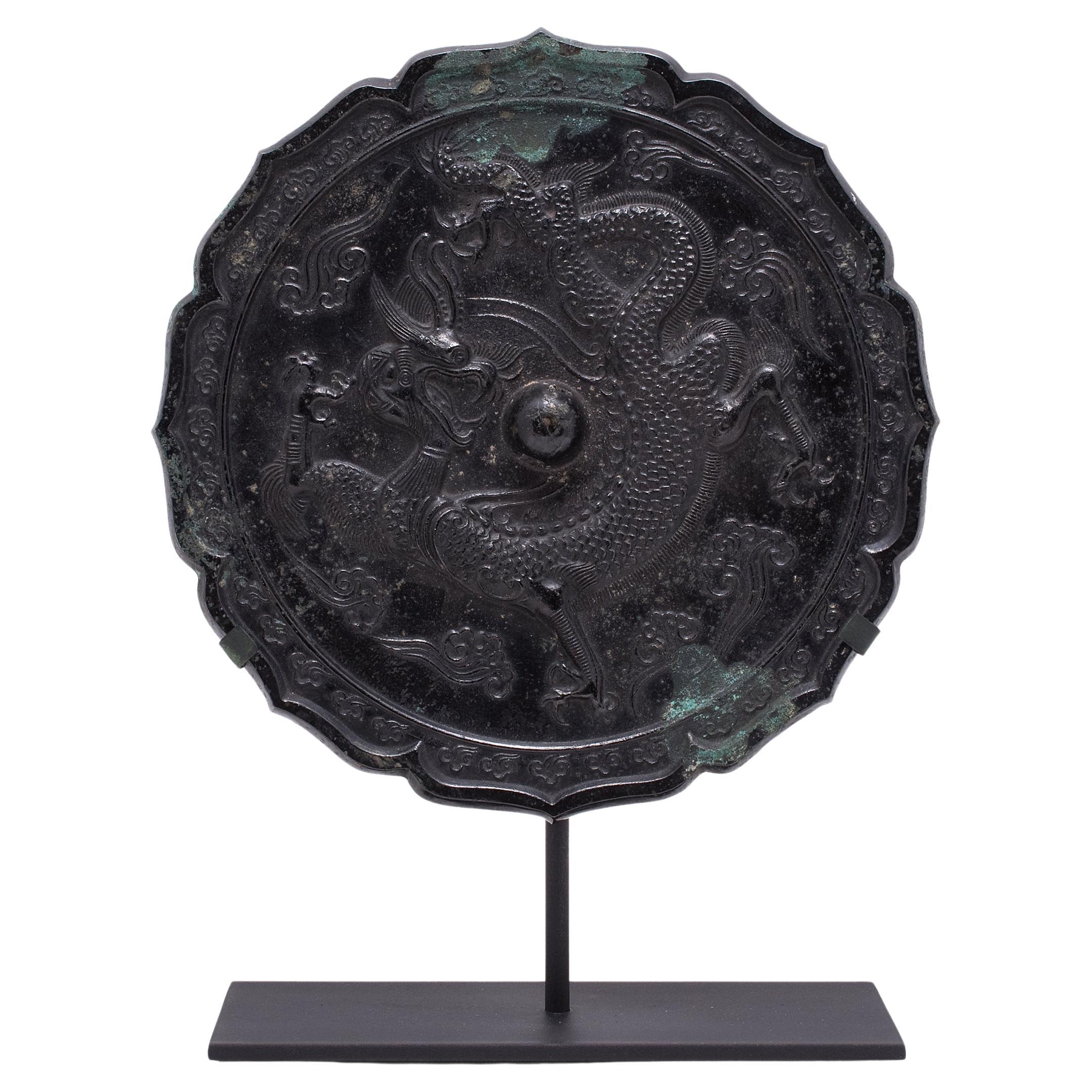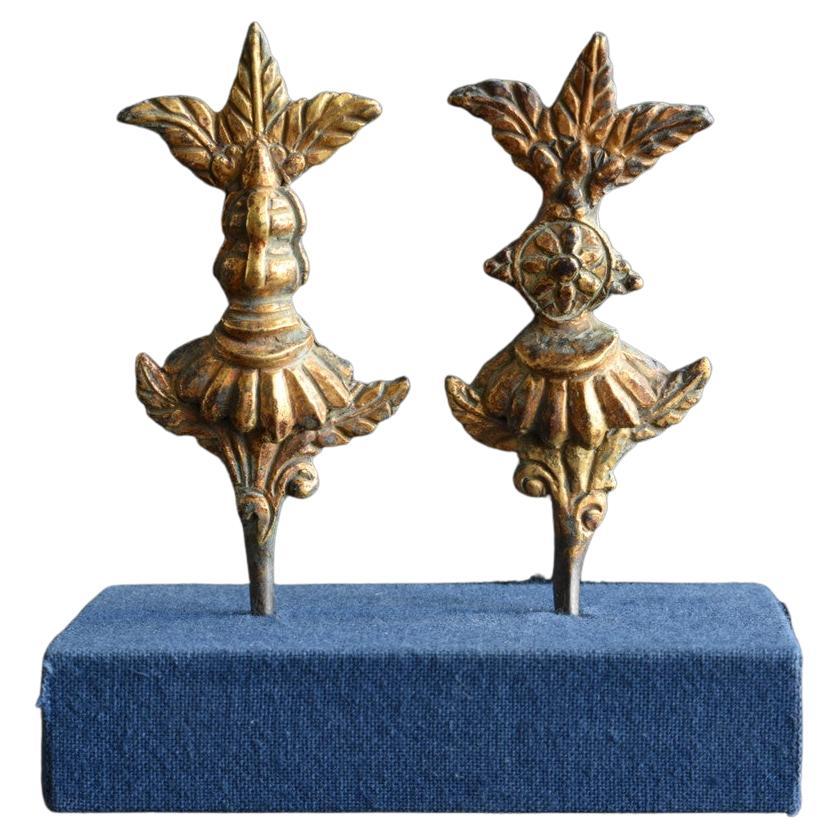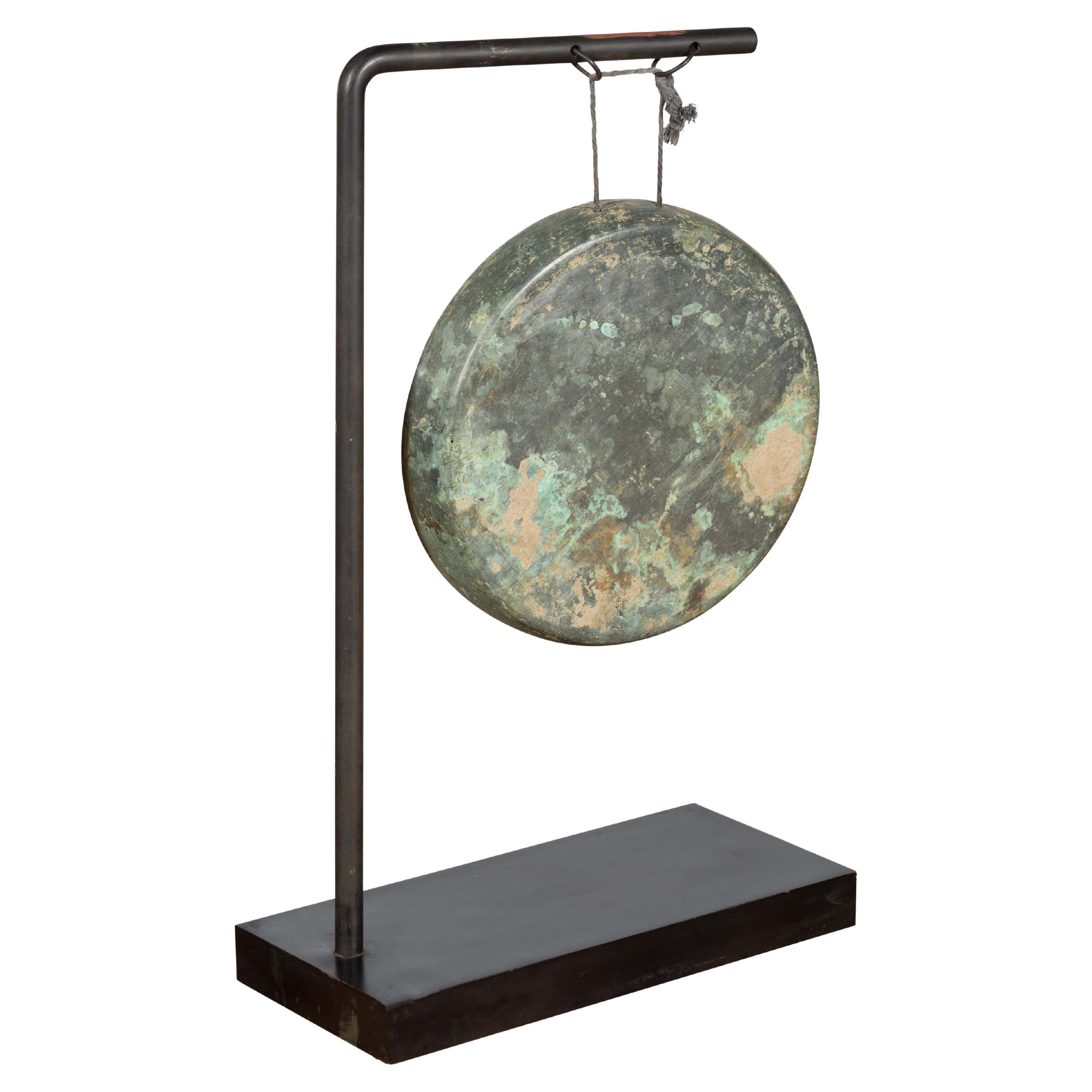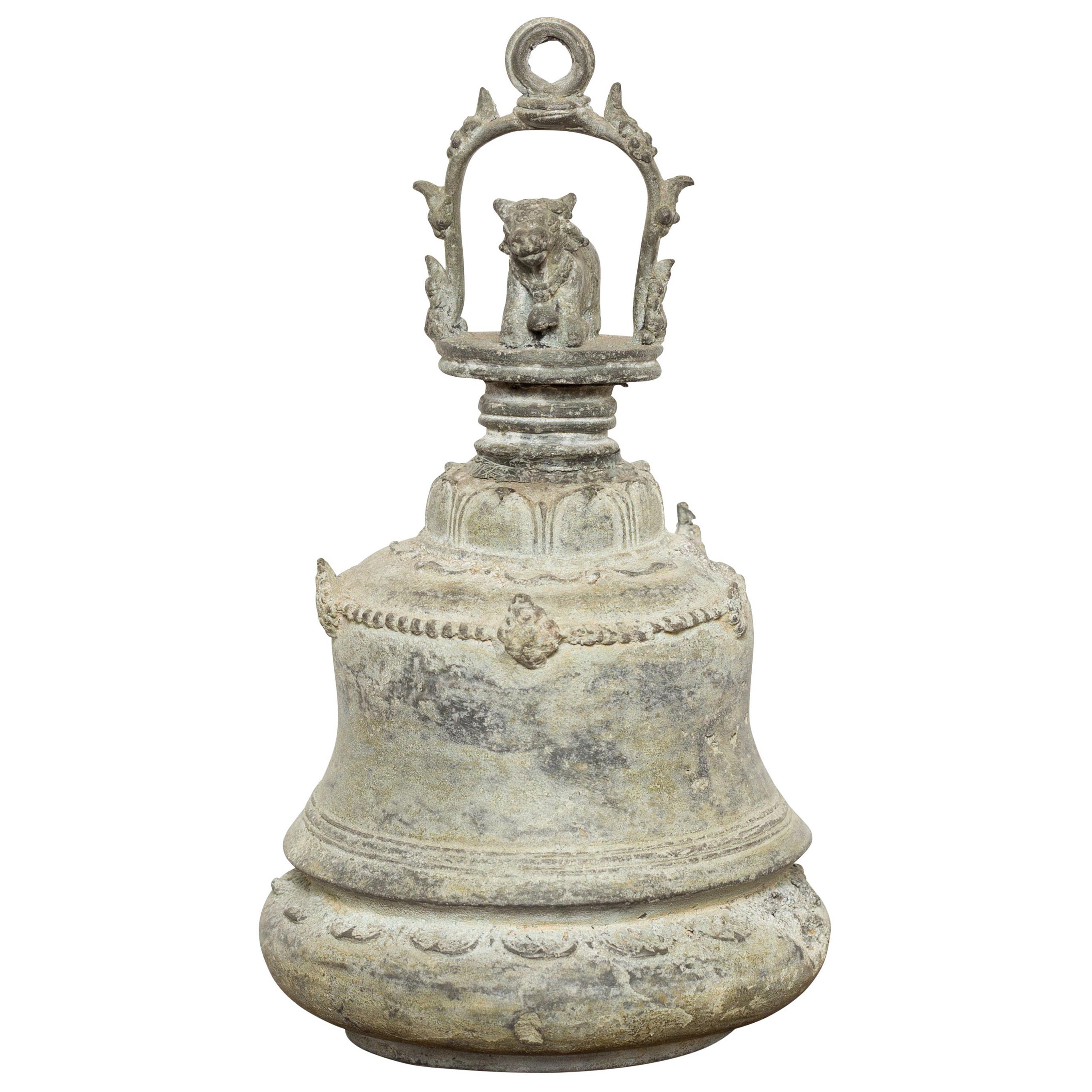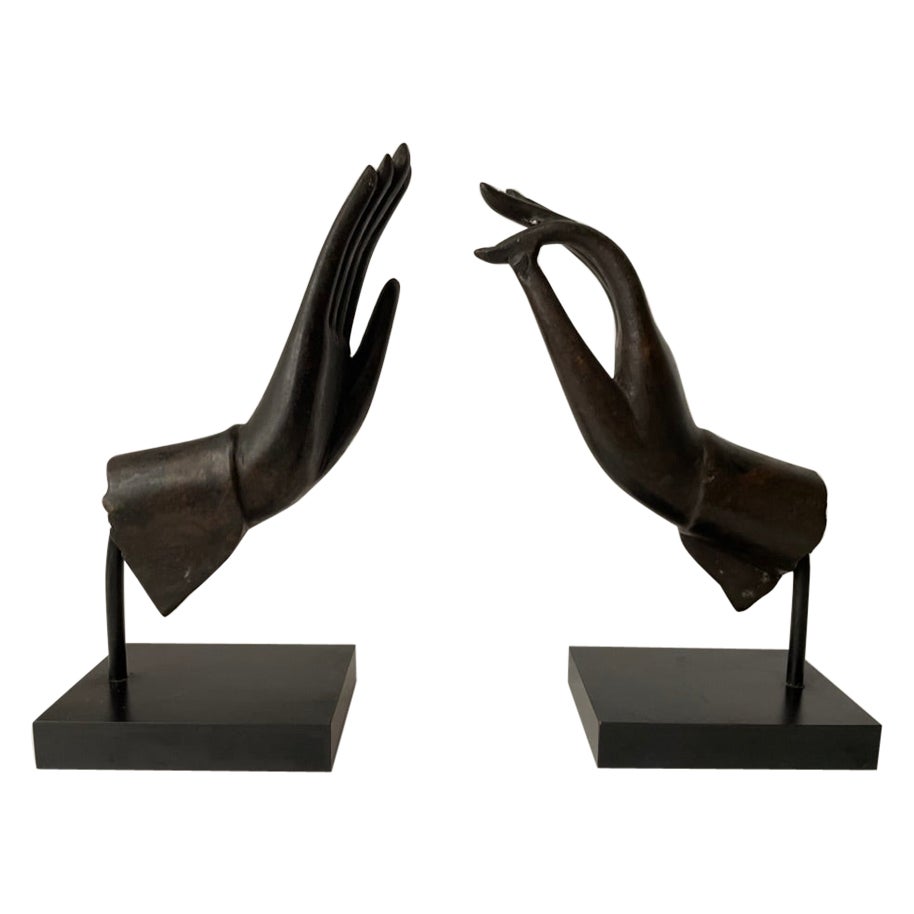Items Similar to Antique Mythical Tiger Finial Bronze Palanquin Handle 18-19th Century
Video Loading
Want more images or videos?
Request additional images or videos from the seller
1 of 18
Antique Mythical Tiger Finial Bronze Palanquin Handle 18-19th Century
About the Item
Antique 18th 19th Century Palanquin Mythical Lion or Tiger Finial Bronze Handle.
Large heavy Indian Mythological bronze palanquin fitting cast via the lost wax technique, beautifully stylized and crafted in the form of protective mythological creature.
Palanquin finials were used to adorn the pole ends of the palanquin or palki.
A fine and massive example of a palanquin pole finial with good detail and fine patina.
India, circa: 18th/19thc.
The Palanquin handle measures: 9 inches long x 4 inches in depth x 6 inches height.
"Palanquin, or “palki”, are litter-type conveyances that have been in use in India for centuries. These finials would have adorned the pole ends that were used to support and carry the passenger compartment.
18th-19th century palanquin mythical beast finial handle in bronze, in a nice rich dark brown patina, unpolished (as found condition). Palanquins were used for transportation of people of wealth and power in India and the East. Palanquin finial/handles were decorative caps on the poles and were meant to protect the person being carried in the palanquin from demons and evil spirits.
These Palanquin handle were used to slide a wooden pole trough which carried a litter. The adornments of the carriage was meant to display the wealth and importance of their passengers. This is clearly visible in the details of these objects which are Masterly crafted.
The word “palanquin” is derived from the Sanskrit “palanki” meaning “bed” or “couch”. These lushly covered conveyances were intended to be carried by four to eight bearers known as “behara”, “dulia”, “boyee” or “behara” depending on the region. The interiors were furnished with specialized bedding materials, including pillows to provide the utmost comfort while traveling. Though the earliest mention of palanquin dates to the 3rd century BCE in the epic poem Ramayana, the height of usage occurred during the Mughal era from the 16th through 19th centuries. It wasn't until the advent of railways and roadways that could accommodate wheeled modes of transportation that the use of palanquin fell out of favor. Today, these bygone conveyances are used in ceremonies such as weddings. The ornamentation and complexity palanquin was directly related to social status. The finials also abided by this convention, but these adornments also reflected whether the owner was male or female. Flowers, particularly lotuses, and birds were the typical forms found on women’s palanquin, while those for men often featured fierce animals and creatures from Indian mythology and folklore. Similar palanquin finials can be found in the collections of the Victoria & Albert Museum in London and New York's Metropolitan Museum of Art. The Heritage Transport Museum in Taoru, India has an entire exhibit devoted to palanquin with varied finials on display."
Provenance: private southern California, USA collection.
About the Seller
5.0
Platinum Seller
These expertly vetted sellers are 1stDibs' most experienced sellers and are rated highest by our customers.
1stDibs seller since 2011
2,645 sales on 1stDibs
Typical response time: 1 hour
- ShippingRetrieving quote...Ships From: North Hollywood, CA
- Return PolicyA return for this item may be initiated within 7 days of delivery.
More From This SellerView All
- 19th Century Oriental Bronze Japanese Kagami Handled MirrorLocated in North Hollywood, CAAntique traditional Oriental bronze Japanese Kagami handled Mirror. An exceptional and stunning Japanese bronze handled mirror called Kagami. Large and heavy bronze handle mirror ...Category
Antique Late 19th Century Japanese Meiji Metalwork
MaterialsBronze
- Antique Copper Vase with Hindu Scenes, 19th CenturyBy Artisan HouseLocated in North Hollywood, CAAntique 19th century floor bronzed copper large vase. Tall brass Indo Persian vase in a trumpet shape. Handcrafted large sculptural elegant bronzed color metal copper vase. Delicately handmade and etched, hammered and carved with very Fine jungle, animals like elephants and deers and tigers, monkeys and Hindu figures scenes designs. Probably a story from the ancient Hindu epic Ramayana, a text historically popular in the South Asian and Southeast Asian cultures. This summary is a traditional legendary account, based on literary details from the Ramayana and other historic mythology-containing texts of Buddhism and Jainism. Hanuman is one of the central characters of the Hindu epic Ramayana. 19th century collector piece, museum quality, nice dark copper antique patina. Hand-hammered decorative metalwork Hindu Folk Art.Category
Antique Mid-19th Century Indian Arts and Crafts Vases
MaterialsBrass, Copper
- Antique 19th Century Middle Eastern Tinned Copper EwerLocated in North Hollywood, CAAntique 19th century middle Eastern tinned copper ewer. Nice decorative old rustic hand-hammered ewer in the Mameluke style. Moorish middle e...Category
Antique 19th Century Turkish Moorish Pitchers
MaterialsCopper, Tin
- 19th c Antique Middle Eastern Dallah Turkish Ottoman Bronze Copper Coffee PotLocated in North Hollywood, CA19th Century Antique Middle Eastern Asian traditional Turkish ottoman copper Dallah coffee pot. Antique Coffee pot hand-hammered and chased copper with r...Category
Early 20th Century Turkish Islamic Metalwork
MaterialsCopper
- Antique Mughal Engraved 19th Century Hookah Base Indo-PersianLocated in North Hollywood, CAA fine antique 19th century Mughal Nargile or hookah pipe base made of brass or bronze, the base with engraving and etching decorations. Mameluke revival brass hookah base, elaborately and elegantly hand decorated, engraved with with a recessed repeated floral motif, leaf, foliage and arabesques. Collectible Antique Indian Islamic Mughal engraved brass hookah base, bottle. This fascinating Indo-Persian Brass Engraved Vessel Hookah Base dates from the 19th century, where it was used as a water base for a hookah, or shisha pipe. In traditional hookah smoking, the base of the pipe is normally the most decorative element of the piece. This vase has a beautiful shape and feel. It is intricately engraved with a arabesque foliage designs Mughal Northern India - 19th century. A nargile or hookah pipe's history dates back as far back as the 16th century, This charming piece has an elegant profile, will make a stunning vase, candle holder or shelf or mantel decoration...Category
Antique Late 19th Century Indian Islamic Vases
MaterialsBrass
- Antique 19th Century Turkish Ottoman Tinned Copper Ewer PitcherLocated in North Hollywood, CAAntique 19th century Asian, Middle Eastern style Turkish tinned copper ewer. Antique Turkish ottoman Islamic Ewer Tombak pitcher brass copper Ibrik. Nic...Category
Antique 19th Century Turkish Moorish Metalwork
MaterialsMetal, Brass, Copper
You May Also Like
- Chinese Bronze Mirror with Cast Relief Dragon, Late 19th CenturyLocated in Chicago, ILThis antique Chinese mirror is cast of bronze in the tang-dynasty style, with a lobed rim of eight flower petals, each filled with small cloud motifs. The front of the mirror is cast...Category
Antique Late 19th Century Chinese Qing Metalwork
MaterialsBronze
- Gold Ornaments of Antique Chinese Buddha Statues / 17th-19th CenturiesLocated in Sammu-shi, ChibaThis is thought to be part of the decoration of a gilt-bronze Buddha made in ancient China, from the late Ming to the Qing dynasties. It is thought that it is probably an ornament t...Category
Antique 17th Century Chinese Ming Figurative Sculptures
MaterialsCopper
- 19th Century Cambodian or Thai Bronze Gong Mounted on Custom Made BaseLocated in Yonkers, NYAn antique Cambodian or Thai bronze gong from the 19th century mounted on a black custom base. Created in Cambodia or Thailand during the 19th century, this circular bronze gong is t...Category
Antique 19th Century Cambodian Mounted Objects
MaterialsMetal, Bronze
- Burmese 19th Century Bronze Ceremonial Bell with Verde Patina and Cow MotifLocated in Yonkers, NYAn antique Burmese bronze ceremonial bell from the 19th century with verde patina and cow motif. Created in Burma during the 19th century, this bronze ceremonial bell will make for a...Category
Antique 19th Century Burmese Metalwork
MaterialsBronze
- Large 19th Century Antique Indian Hindu Ganesha Figural Votive Brass Oil LampLocated in Portland, ORA large antique early 19th century Indian brass votive oil lamp modeled as the Hindu deity, Lord Ganesha, circa 1800. A finely cast brass figure of Lord ...Category
Antique Early 19th Century Indian Anglo-Indian Metalwork
MaterialsBrass
- 19th Century Pair of Thai Bronze Hands of the Buddha, Abhaya and Vitarka MudrasLocated in Stamford, CTElegant pair of bronze hands of the Buddha displaying two ritual gestures, the Abhaya mudra, which represents protection, peace, benevolence, and t...Category
Antique Late 19th Century Thai Qing Metalwork
MaterialsBronze
Recently Viewed
View AllMore Ways To Browse
Antique Handles For Furniture
Antique Furniture Finials
18century Furniture
Large Finial
Antique Bronze Handle
Antique Bronze Handles
Finials Four
Four Finials
Cast Finials
Antique Bronze Finial
Bronze Era
Bird Handles
Flower Finial
Asian 18 Century
Antique Museum Display
Wooden Finials
India Art Antique
Southern Asian Furniture
